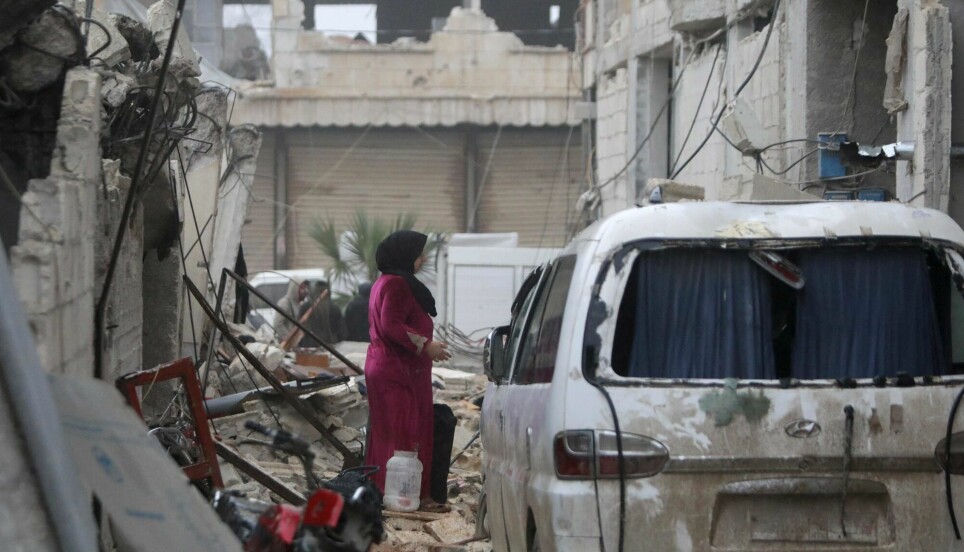
Why was there no earthquake warning in Turkey?
And why is Turkey at such high risk of earthquakes?
“I woke up to the fact that my apartment in Beirut was shaking and swaying,” reporter for ScienceNorway.no Ingrid Schou said.
By Thursday it was reported that more than 17,000 people have been killed by the earthquakes that struck Turkey and Syria on Monday February 6. Several tens of thousands are injured and the numbers are rising - by February 16 the death toll is nearing 42 000 according to Al Jazeera.
The earthquake's epicentres are located near the city of Gaziantep with over 2 million inhabitants.
Collapsed buildings
The first earthquake happened Monday night, followed by more quakes in the morning.
ScienceNorway.no’s reporter Ingrid Schou is currently living in Beirut in Lebanon, situated 400 kilometres from the epicentre.
“I woke up to the fact that my apartment in Beirut was shaking and swaying. I also heard loud cries from the apartment above me,” Ingrid Schou said.
“At first I was a bit confused, but then it dawned on me that it could be an earthquake. The only thing I thought was that I wanted out of the fifth floor of the brick building and out on the open street.”
“We are far from the epicentre, but we felt it strongly anyway”, Schou said.
Can't warn an earthquake in advance
The earthquake had a magnitude of 7.8 on the Richter scale. Shocks between 7 and 8 are defined as powerful shocks with major damage.
Mathilde Bøttger Sørensen is a professor of geophysics at the University of Bergen in Western Norway.
We asked her why no one has managed to predict last night's major shock with modern monitoring systems.
“You can only measure the earthquake after it has happened,” she said.
“You can build as many monitoring stations as you want, but you only get a result when the quake has already happened,” she said.
This means that it is impossible to warn of an earthquake in advance.
The monitoring systems can primarily help to understand earthquakes and to create statistics, she says. These statistics can be used to better prepare for the next quake and to assess where it is likely to occur.
These systems monitor, among other things, where and when the earthquake occurs, how big it is, and what movements in the earth's crust cause it.
Plates colliding
Turkey is particularly exposed to the risk of earthquakes because there is a so-called plate boundary there. Several large tectonic plates meet.
“Africa is moving north and collides with Europe and Asia, which are located towards the north,” Professor Mathilde Bøttger Sørensen said.
The Anatolian microplate makes up most of Turkey. It is in the middle, complicating it all.
“Due to a collision between Africa and Europe, the Anatolian plate is being squeezed westward. That's why we have most of the major earthquakes in Turkey,” she said.
Bigger than the 1999 earthquake
In 1999, there was another large earthquake in Turkey. The earthquake in Izmit claimed the lives of more than 17,000 people. In addition, half a million were made homeless.
The earthquake on February 6 was bigger than the 1999 earthquake. The earthquake 24 years ago had a strength of 7.4. Last night's earthquake had a strength of 7.8.
She finds it difficult to say at this stage what the extent of the new earthquake will be.
“I think there will be quite significant losses.”
Energy that propagates
An earthquake is a form of breakage within the earth's crust, Sørensen explained.
“In connection with this break, a lot of energy is released, and it propagates through the earth's crust. That's why it can be felt in large areas.”
The strength of the earthquake and its location are factors that determine the size of the damage.
Another important factor is the amount of infrastructure in the area and how vulnerable the infrastructure is. For example, an earthquake that affects many apartment blocks that are not built to withstand earthquakes, will result in many lost lives.
Refugee camps likely hit
Many vulnerable people live in the area where the earthquake hit.
“Many vulnerable people live in buildings of poor quality. This makes the situation much worse, Sørensen said.
It is also located in an area with many vulnerable buildings. The earthquake also occurred near the border to Syria, where there are large refugee camps.
Afraid of more earthquakes
In Lebanon, people react very differently to the earthquake, reporter Ingrid Schou explained.
“Some people stayed in their apartments, while others took to the streets. There were also some who got in their car,” Schou said.
An elderly woman she spoke to said she had been awakened by all the shaking.
“But she shrugged and said she had gone through the Lebanese civil war earlier. Younger people I have talked to are affected by the event. They are afraid of aftershocks,” she said.
Is there a risk of more earthquakes?
A few hours after the first earthquake, a new earthquake of 7.5 hit. We asked professor Sørensen what we can expect in the future.
"There will definitely be many aftershocks in the area from now on, and it may last for weeks and months to come, and gradually subside," she said.
"You will have a redistribution of tensions in the area that creates a domino effect."
Generally, it is assumed that aftershocks will become weaker.
According to Sørensen Turkey was not prepared for this earthquake to come right now.
"This is not an earthquake that they have been waiting for. But they know that it is an area with many earthquakes, so it's not very surprising that it came."
This article was updated on February 16 to add the most recent death toll.
———

































